Ways to deal with tanks equipped with dynamic protection
In the context of the new policy, consisting both in reducing the allocation to the Ministry of Defense and in reducing the number of personnel, ensuring high efficiency is one of the urgent problems of the further development of military equipment and weapons. For this reason, reforms in the Russian Army should be closely linked with the creation of highly efficient weapons. Since the struggle with tanks is one of the main tasks of almost all military branches, it is necessary to further improve anti-tank weapons (TCP). The use of new defense structures on tanks requires ammunition to take adequate measures to create highly effective anti-tank weapons.
In recent years, foreign armies have paid much attention to increasing the combat survivability of armored vehicles. Modern and promising tanks are equipped with dynamic protection (DZ), which is effective against both cumulative and armor-piercing sub-caliber projectiles (BPS). Along with the installation of DZ on tanks, DZ is installed on the BMP, BTR, SAU (close ammunition), on various engineering fortifications.
Dynamic protection is a block of spaced obstacles made of metallic and nonmetallic materials, including plastic explosive sheet charges (UIP), which, as a result of using explosive energy, increase the resistance level of protection when subjected to armor-piercing projectiles and cumulative damage weapons. Increasing the level of durability of protection is ensured by the dynamic impact of obstacles (thrown by the explosion of sheet charges UIP) on the penetrating drummer. In the Lebanese events with the help of DZ was significantly increased the overall resistance of the armor of old tanks (Centurion, Sheridan, M-48A3, M-60) from cumulative grenades of domestic RPGs widely used in this conflict. It should be noted that modern designs of dynamic protection were created in the conditions of "binding" to existing tanks. Such a binding did not allow achieving high values of the efficiency parameters of both the DZ and the protection as a whole. However, the high effectiveness of armor protection can be achieved by creating a new generation tank.
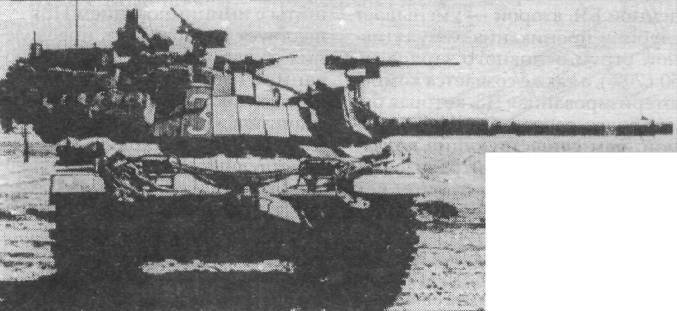
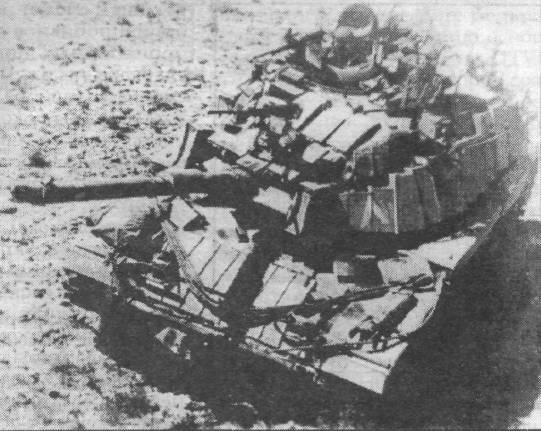
The use of advanced technologies, powerful modeling techniques to justify the optimal design of armored vehicles allows you to create tanks with a high level of integrated protection, in which DZ began to play a decisive role. Today, the creators of tanks, having the opportunity (thanks to the use of ductile explosives) of a wide mass of maneuver, dimensions in the layout of complex protection, have certain advantages over ammunition, which are tied with restrictions on caliber and mass of ammunition.
Recall that the DZ is a protective device (which includes a PVV charge) that acts on a BPS tank or a cumulative jet (CS) caught in order to drastically reduce their armor-piercing effect. High effectiveness of dynamic protection in reducing the armor-piercing ability of the ammunition is achieved by lateral impact of metal plates thrown by the explosion on the cumulative jet and armor-piercing sabot projectiles.
Active research and development allowed the creation of remote sensing structures with different efficiencies. So, if at the beginning a mounted dynamic protection was created to combat cumulative ammunition, then built-in dynamic protection soon appeared, designed to combat both cumulative ammunition and armor-piercing sabotage projectiles. In our country, the integrated remote sensing system was worked out at the beginning of the 60s. However, the installation of DZ on domestic tanks in its not the best version was carried out in 1985 year. Such a late appearance of DZ negatively affected the timely creation of domestic anti-tank ammunition capable of overcoming DZ. At the same time, in order to immediately practice the development of dynamic protection capable of fighting with BPS and tandem cumulative ammunition, our developers have created a mounted DZ that can fight only with old cumulative ammunition.
At the same time, there are negative examples of how equipment is equipped with dynamic protection of a mounted type of tanks in military conditions. So the photo shows a variant of “amateur” placement of containers DZ on the T-72 tower. The third row of containers does not increase the overall effectiveness of dynamic protection, but increases the area from which neighboring DZ containers will be demolished by an explosion. The tank will be "naked" for later exposure. In addition, with a three-layer arrangement of DZ containers, the dynamic loads on the internal equipment and the crew increase and the efficiency of their destruction increases without penetrating the tank armor.
Domestic tanks T-72B, T-80UD and foreign М1А2 (USA), Leopard-2 (Germany), Leclerc (France), tank 90 (Japan) are equipped with dynamic protection of the built-in type, and an installation option its on the upper frontal parts of the hull of the tank T-80 (China). It is known that the effectiveness of dynamic protection is determined by the length of its elements. On foreign tanks, the DZ units are 500 mm in length, which makes it possible to effectively influence not only single-piece ammunition (with one shaped charge), but also tandem warheads. On our own tanks, the length of the blocks for the sake of unification is 250 mm, which led to its low efficiency. From comparing the sizes of DZ blocks, for example, on the upper frontal part of the hull of an American tank with a DZ on a domestic tank, it can be seen that the 2 series is located on a foreign tank, and on a domestic tank - 4 of a number of DZ containers. This comparison alone testifies to the greater length of DZ units on foreign tanks.
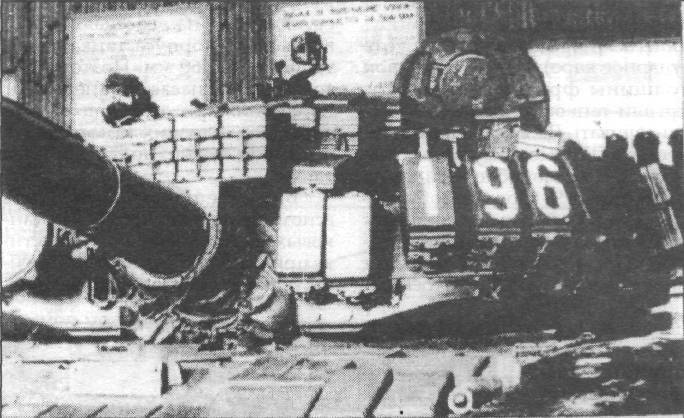
Currently, there are options for the development of a tandem DZ with two separated layers of plastic explosive (the first layer of PVV neutralizes the effect of the first charge of the tandem warhead, the second - reduces the penetration depth of the cumulative jet of the main charge on 50 ... 70%), and also creates a computerized DZ, which will be more complex and effective than the existing structures and will be able to neutralize the armor-piercing effect, both of armor-piercing sabots and cumulative ammunition of caliber 120 mm and more. This “intelligent” design is a computerized version of the DZ, which detects, deflects or destroys BPS and CS using small DZ blocks. This design uses sensors connected to a computer that controls the entire system. When the attacking ammunition passes through the sensor system, the computer will determine the parameters of the projectile and the number of RS blocks that should neutralize the ammunition. Such a scheme makes it possible to spend more economically on a DUV DZ and less significantly affect external and internal units of armored vehicles. It is assumed that this system can be installed on promising modifications of the tank Ml and BMP "Bradley". The considered system is safer than the existing DZ, since it is initiated only by a computer signal. At the same time, promising MTS should use the electronic saturation of computerized remote sensing by creating false interference and carry out a remote undermining of its units.
Equipping tanks with dynamic defense intensified work in developed countries to improve anti-tank weapons. To date, ammunition has been created capable of "overcoming" remote sensing, but, in general, many issues of the problem of defeating bronzelei with remote sensing remain unresolved. There is a variety of created and developed structures of the TCP, designed to combat bronzemel, equipped with remote sensing. In the conditions of limited material resources and increasing the effectiveness of the TCP, a comprehensive scientifically based approach is needed in choosing the directions of development of this type of weapon. However, research results indicate that along with a way to overcome dynamic protection with the initiation of UIP, there is a possibility of overcoming its elements without initiating UIP. Since the roof, bottom and sides of the tanks have small thickness, the creation of anti-tank weapons acting on these fragments (even in the presence of a DZ) will significantly improve the effectiveness of anti-tank weapons. New tactical methods of firing even “old” ammunition can give a positive result. And, finally, non-traditional methods of hitting targets open up new effective ways of fighting tanks. It is necessary to note the need to implement a course on the extension of the life cycle of some TCP due to modernization. One of the proposals in this direction may be the replacement of cumulative preloads (PPs) of tandem combat units (SCs) of ATGMs with flattened high-explosive-directional charges.
With the advent of dynamic protection, anti-tank ammunition developers have proposed new layout schemes for missiles, including those with a tandem warhead. According to the creators of tandem warheads, the cumulative charge or precharge (PZ) first along the rocket’s movement ensures the initiation of the explosive in dynamic protection, and the second - the main charge (OZ) triggers after a period of time sufficient to leave the fragments of the dynamic protection from the trajectory of the cumulative jet, that is, it acts on the “bare” body of the bronzelli.
The first reaction of the ammunition to the emergence of dynamic protection was the modernization of standard means, t. e. carried out the refinement of one-piece BCh ATGM to the level of tandem. Thus, the TOW-2 ATGM with the help of the precharge placed in the head stock was brought to the TOW-2А level with a tandem warhead. When modernizing domestic and foreign ATGM structures, a layout scheme (Fig.1) was used, in which the precharge (5) installed in the head compartment was located in front of the main engine (6) with a channel (7) for passing the cumulative main charge jet (8). With this design, the main engine protects the main charge from the explosive effects of precharge. But this layout has two significant drawbacks. The first of these is that, due to the shortage of free volumes when placed in the head section of the precharge, it turns out to be small with a small amount of explosives. Therefore, the cumulative jet of such a precharge has low armor penetration and low initiating capacity, t. e. only the head sections of this jet initiate UIP in the elements of dynamic protection. The position of the precharge against the DZ container, at which normal operation is carried out, is shown in Figure 1. When the precharge is hit in the extreme zone (fig.1b) of the near container, the head sections of the cumulative jet of the PZ are “consumed” to break through the upper and side walls, as well as the side wall of the far container. The remaining part of the cumulative jet does not have sufficient initiating ability to initiate an explosion in the elements (3,4) of the neighboring container, where the cumulative OZ jet then flows. Under these conditions, when interacting with elements of a DZ, the cumulative jet of the main charge loses a significant part of its armor-piercing effect. A similar situation is also observed when the cumulative precharge charge interacts with the thick upper wall of the dynamic protection container. Here, also, the remaining energy of the cumulative jet is not enough to excite the detonation of the explosives in the elements of the DZ. It should be noted that Fig. 1 presents options for the interaction of a tandem warhead ATGM with a DZ container having a length of 250 mm, which is installed on domestic tanks. The following disadvantage can be attributed to the second drawback of the mentioned ATGU layout scheme. When hit by ATGM (Fig. 2a) in the left extreme zone of the DZ container (500 length mm) the propulsion system (6) and the main charge (8) are in the danger zone, in which the upper part of the container (2) is thrown by the explosion products, called the throwable screen. The impact of the missile screen (Fig.2b), according to ATGM, leads to the deformation of the body of the propulsion system (6), as a result of which the channel collapses (7) and the main charge is destroyed, which causes a significant reduction in the armor-piercing effect of the main charge. Even more susceptible to the destruction of the main charge of the Hellfire ATGM design (Fig.3), in which the main charge is placed immediately after the precharge.
For this reason, ATGMs with tandem warheads equipped with proximity fuse devices have been created, which allow preload to be detonated at a distance of several meters from dynamic protection (AC-3G ATGM), as well as use a precharge to be fired (ATN 2T). The layout solutions used in these anti-tank guided missiles made it possible to significantly increase the time delay between the undercharging of the precharge and the main charge, which ensured the entry of the main charge into the zone free of the explosion-protected dynamic protection fragments. A layout scheme with a precharge chargeable is shown in Figure 4. Powder charge (3) weighing several tens of grams allows a smooth separation (Fig.4b) of the head compartment (1) with a precharge (2) from the main rocket body (5). This design allows you to set the optimal time delay between explosives PZ and OZ (Fig.4с), providing the departure from the trajectory of the cumulative jet of the main charge of the missile screen (7) and the approach of the main charge to the bare armor of the tank. The layout of the 2T ATGM NOTF is most preferable; in the case of a change in DZ parameters, it is relatively easy to upgrade the design of the warhead by adjusting the distance (at which the precharge is carried out) and the time delay of the main charge. At the same time, an ATGM with a recoverable precharge, if there is an active defense in addition to the DZ (A3) on the tank, will solve the problem of simultaneously overcoming these two defenses. Recall that the principle of action of active protection is that with the help of the means installed on the tank, the ammunition flying toward it is detected, which is affected (for example, by means of a fragmentation flow) in order to destroy it or reduce its effectiveness. Having provided the precharge with protection against fragmentation flow, it can be expected that, having detonated the plastic explosive of dynamic protection, it will allow to bring the main charge closer to the “bare” armor without the impact of the fragmentation flow, since the active protection will not have time to “recharge”.
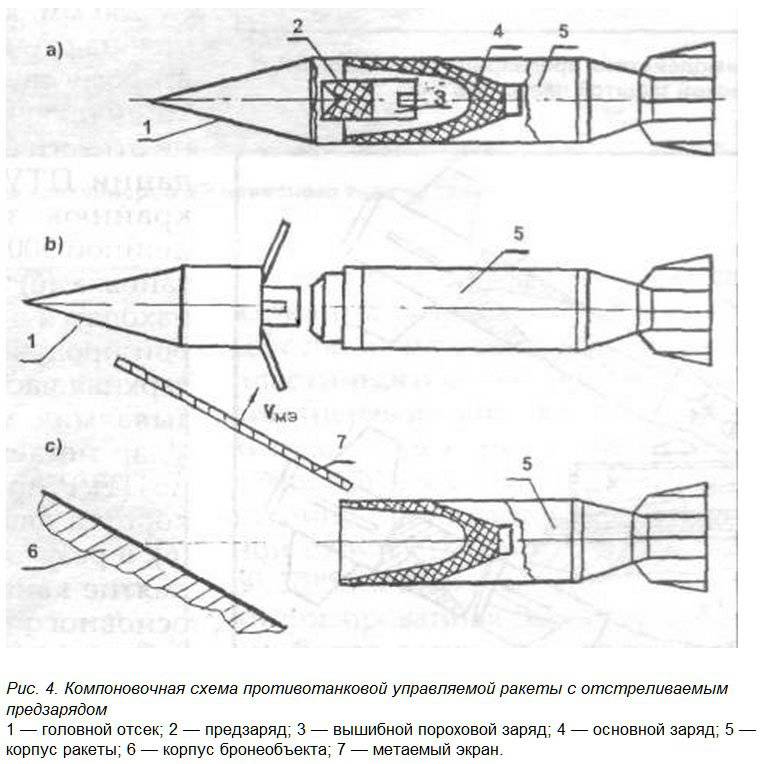
In addition to the way to overcome the DZ with the initiation of detonation, there is a way to overcome without the detonation of a plastic explosive in dynamic protection. Unfortunately, in the development of tandem ammunition, this method has received insufficient attention. This method is due to the "low" sensitivity of the PVV used to equip elements of the DZ. The low sensitivity of the explosives in the elements of the DZ is due to the requirements for non-initiation of detonation in the event of a fragmentation impact, when shooting a bullet or a small-caliber projectile.
Foreign and domestic experts have established that during dynamic loading of elements of dynamic protection with equipped plastic explosives, the following processes may occur:
- UHV explosion;
- “puncture”, in which a zone is formed that is free of PVV, with an area equal to the area of the drummer;
- the formation of a zone free of PVV in size exceeding the cross-sectional area of the impactor;
- water hammer, in which there is a release of almost all the UIP from the housing element DZ;
- an air impact, characteristic for the case of the presence in the DZh element of a volume of unfilled UIP, entering into which the CS leads to the opening of the element without an explosion; This situation arises due to a technological defect.
To implement a method for overcoming dynamic protection without detonation of UIP, a flattening high-charge pre-charge can be used. Tandem munitions with a flattening high-explosive directional firearm can "overcome" virtually all standard dynamic protection designs.
So far, armor-piercing sub-caliber shells have been considered one of the most effective anti-tank weapons. The defining indicator of BPS is armor penetration. The thickness of the armor plate, punched BPS, is determined by the mass and speed of the projectile, as well as its cross-section (i.e. depends on its diameter).
Increased armor penetration can be achieved by increasing the mass, speed and reducing the diameter of the projectile.
This is achieved by using depleted uranium as a structural material, a by-product of the nuclear industry. Until recently, tungsten was used as a construction material for the production of BPS cores, which is one of the rare metals and foreign experts believe that three-quarters of the world's reserves are located in China. After conducting a large number of experiments with a number of heavy metals and their alloys, research experts concluded that the most successful substitute for tungsten alloys in the cores of armor-piercing subcaliber shells is depleted uranium. To improve the physical and mechanical properties of depleted uranium is used in BPS in the form of alloys, with small additions of alloying elements: titanium, molybdenum and others. To obtain high armor penetration, BPS from depleted uranium is currently about 500 mm long with a diameter of 20 ... 30 mm. This increase in the length of the projectile and the reduction in diameter contributes significantly to the deformation and destruction during its interaction with the screen and remote sensing.
Large and unprotected areas of tanks from the roof and bottom always attracted the attention of the developers of anti-tank weapons. To date, ATGMs have been created, the design of which allows tanks to attack from above when diving in the final segment of the trajectory (PARS 3LR, Javelin) or on the span (TOW 2B, BILL). At the same time, certain success was achieved in creating the SRAW anti-tank grenade launcher (firing range - 17 ... 500 m) of an attacking armored target from above. In addition, self-guided, corrected (requiring external illumination of the target) anti-tank artillery shells have been created to date: 152-mm Krasnopol and 155-mm Copperhead, also designed to attack bronzesel from above.
Particularly intensively in the last 15 years, high-precision ammunition has been developing: homing (SNB) and self-aiming (SPB). The main task of high-precision ammunition is the fight against objects of armored vehicles. The delivery of these ammunition to the target can be carried out: using artillery (artillery cluster shells and mines), aviation (aviation cassettes) and using multiple launch rocket systems. Homing ammunition (TGSM, Ephram, Strix, Merlin) are equipped with a direct targeting system. Self-aiming ammunition (Sadarm, Skeet, Bonus, Habicht) search and detect a target during descent with simultaneous rotation, then, when detecting a target, warheads are aimed and the self-forming striking element is shot (strike core). Due to the small thickness of the fragments of the protection of the roof of the tanks, it is impossible to install DZ with a large number of PVV on it. Therefore, the effectiveness of the SNB with a single-block cumulative warhead (armor penetration - 500 ... 600 mm) is not in doubt, since the residual part of the cumulative jet will be quite enough for effective armor action. At the same time, the warhead (based on the principle of an impact core) of self-aiming ammunition has a very important drawback. There is a physical regularity in which powerful shock-wave processes occur in a metal hammer when it collides with a screen at a speed of 2 km / s or more, leading to crushing of the hammer. For this reason, dynamic protection, which is a system of screens with a layer of plastic explosive, can be effective protection against ammunition with warheads on the principle of an impact core. It should be noted that anti-bottom mines using the principle of a shock nucleus are a formidable means of fighting tanks. The most promising way to install anti-bottom mines is remote mining. Positive results during the shelling of tanks equipped with mounted dynamic protection using standard ATGMs with monoblock warheads (i.e., non-tandem) can be achieved by launching two missiles with a short time interval. In this case, the action of the first missile will lead to the demolition of the DZ from the surface of the tank body, and the second missile will interact with the “bare” armor. The second tactical trick can be shooting not at the frontal fragments of the tank’s defense with a DZ moving to the launcher (gun), but at the onboard fragments of the armored target moving to the neighboring launcher, i.e. firing on a tank advancing on a "neighbor". The side protection of the tank hull has a thickness of 50 ... 60 mm. Therefore, no DZ does not save the armored target from damage at ammunition approach angles close to the normal to the side surface of the tank hull.
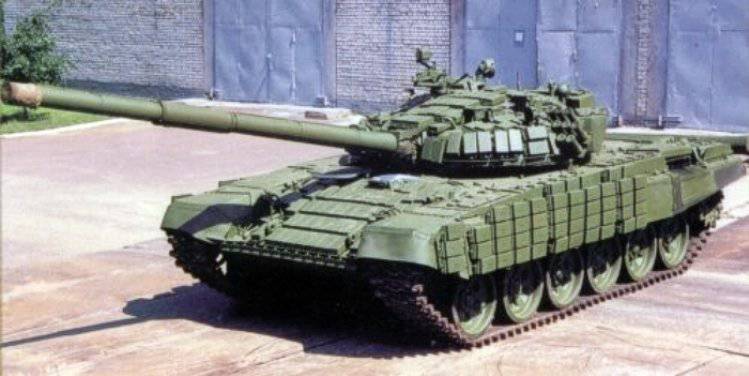
The attentive reader will recall the complete collapse of armored units in the Chechen events when using Russian grenade launchers. The “very best” T-72 and T-80 burned like matches. However, this fact requires special consideration. In street battles, shooting from grenade launchers was conducted from a distance of several tens of meters into the side of the tank (in the zones of the location of fuel tanks and ammunition). Under these conditions, the board with a thickness of 50 mm even in the presence of a mounted DZ could not protect them from the impact of grenades with armor penetration 400 ... 750 mm. Naturally, hitting the cumulative jet into the sleeve or ammunition shell inflicted a severe defeat on the tank.
Special mention should be made of the causes of the burning of the fuel tanks of the T-72 and T-80 tanks, which are thin-walled structures and after being hit by a cumulative jet, as a result of a hydraulic shock, they are destroyed with an intense spillage of fuel followed by burning. In this case, it is not the fuel itself that is burning, but its vapors In foreign tanks "Abrams", "Leopard-2" internal fuel tanks are placed in special reserved volumes, hitting a cumulative jet in which does not cause their destruction and the formation of fuel vapor. It is known that 1 kg of fuel is required to burn 3 kg of oxygen, which is contained in approximately 13 m3 air. Therefore, due to the more durable design of the fuel tanks of foreign tanks, which ensure minimal contact of the fuel with the oxygen of the air, combustion does not occur during their penetration, which makes it possible to include the tanks in the general protection scheme.
A detailed and more in-depth study of the characteristics of vulnerability of bronzelei allows you to create promising ammunition based on unconventional methods of destruction. One of these methods is to defeat the barrel of a tank gun using fragmentation warhead equipped with a proximity fuse. Undermining such a warhead in the area of the trunk will lead to the formation of either holes, or - to a bulge on the inner surface of the trunk. The high probability of hitting several fragmentation elements in the barrel is ensured by their special stacking on the surface of the warhead. For these reasons, bronzesel will be deprived of its main combat property - firepower.
Analysis of the layout of tanks and their combat use showed that the tank could be hit without armor penetration. At the same time, it is necessary that the ammunition with a powerful explosive or kinetic energy carries out a powerful impulse effect on the body of the bronzesel. This impact disables the internal units of the tank.
Currently, developers of dynamic protection have reserves (tandem and computerized options) to significantly increase the effectiveness of its impact on armor-piercing sabots and tandem cumulative ammunition. At the same time, it can be noted that the life cycle of the created domestic tandem ammunition has ended, since these munitions are no longer able to overcome, for example, tandem dynamic protection. At the same time, our PTS developers pay little attention to the creation of anti-tank ammunition operating from the roof. Abroad, to date, about twenty samples of these munitions, which began to enter service, were at various stages of development. The main directions in the development of high-precision ammunition are:
- ensuring the minimum masses and dimensions of self-guided and self-aiming high-precision ammunition;
- increase the power of warheads through the use of facings of heavy metals;
- development of all-weather and interference-free target sensors and homing heads operating in the IR and MM wavelength ranges, including combined ones, to increase the probability of target detection, the widespread introduction of modern element base;
- development of optimal target search algorithms, excluding its pass and false positives;
- development of a system of rational dispersion of elements in order to achieve maximum effectiveness in the destruction of armor liners;
- wide block-modular unification, allowing to achieve universalization of the use of high-precision ammunition on various carriers.
The considered traditional and non-traditional methods of defeating a tank with a DM indicate the need to develop, based on the study of the characteristics of vulnerability of the bronzeles, the concept of creating a number of highly effective TCPs that meet new methods of warfare in various theaters.
REFERENCES
1. Main battle tanks. Edited by Safonov B.S. and Murakhovsky V.I. - M .; Arsenal Press, 1993.
2. Russian rocket weapon 1943 — 1993 Directory. Edited by Karpenko A.V. - SPb; PICA Ltd, 1993.
3 .MN. "Initiation phenomena with shaped charge jets"; 9 Detonation (International) Symposium, 1989.
4. M.Held. "Armor"; 14 International Symposium on Ballistics, 1993.
5. W. Schwartz. "Explosive reactive armor - How it works and to defeat it"; Military Technology, Vol.15, No.8, 1991.
6. Patent France, No. XXUMX, cl. F 2569834 B, 42 / 13 (00 / 1), decl. 02, publ. 05.09.84.
7. MMayseless, Y.Erlich, Y. Falcovitz, G. Rosenberg. “Interaction of a cumulative jet with moving plates”, 8 — 23, 25 — Proceeding of the 1984th International Symposium on Ballistics, Orlando, Florida, October
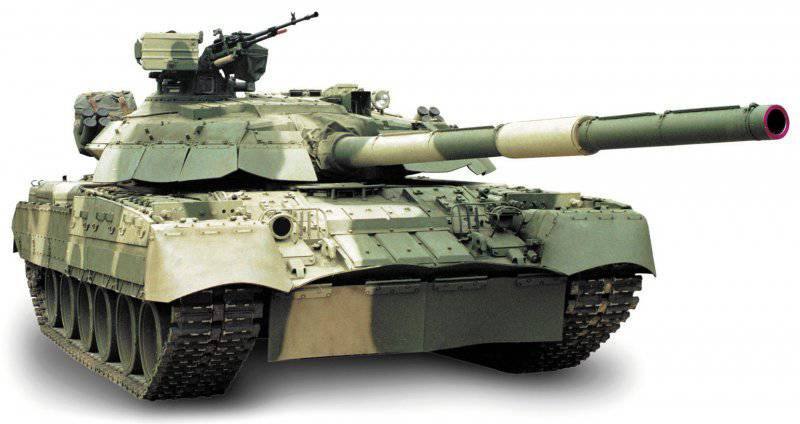
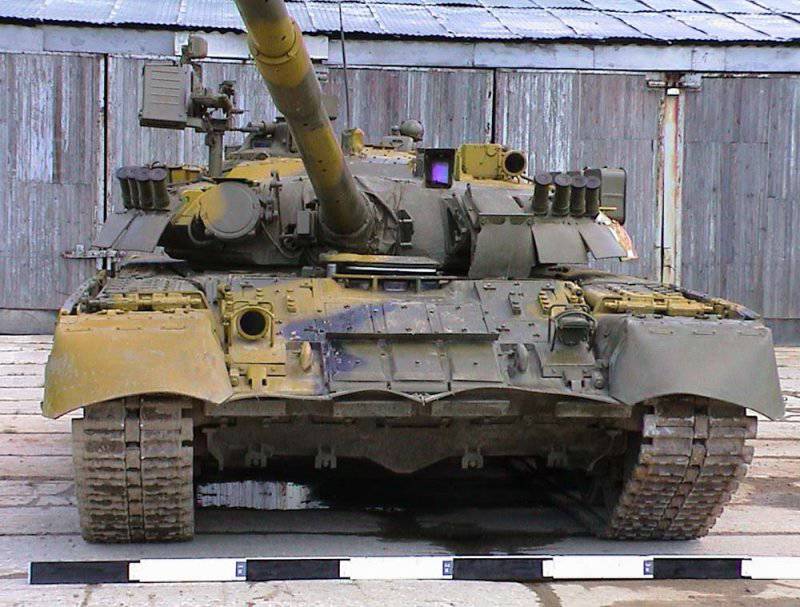
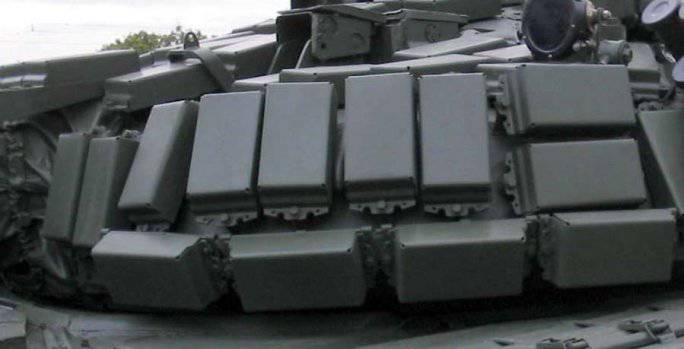
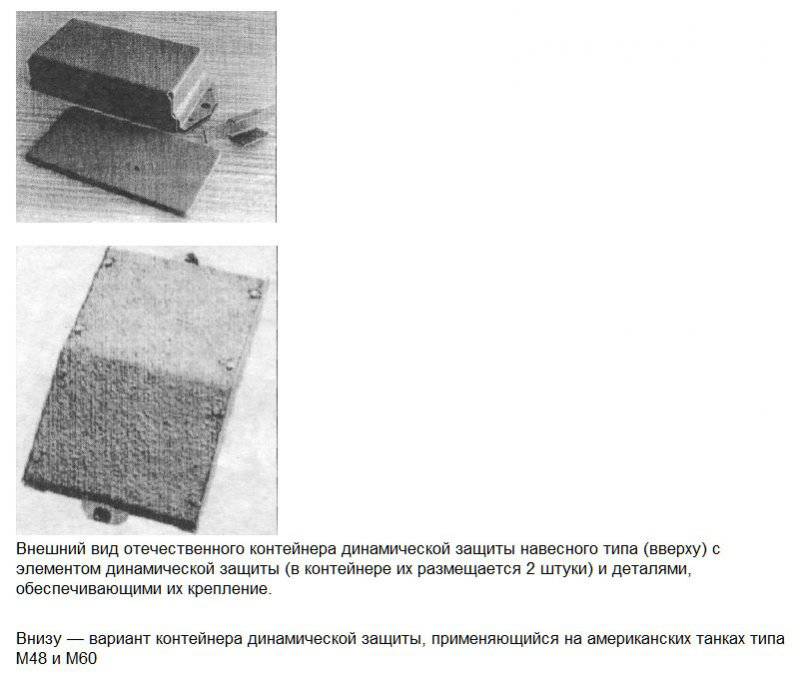
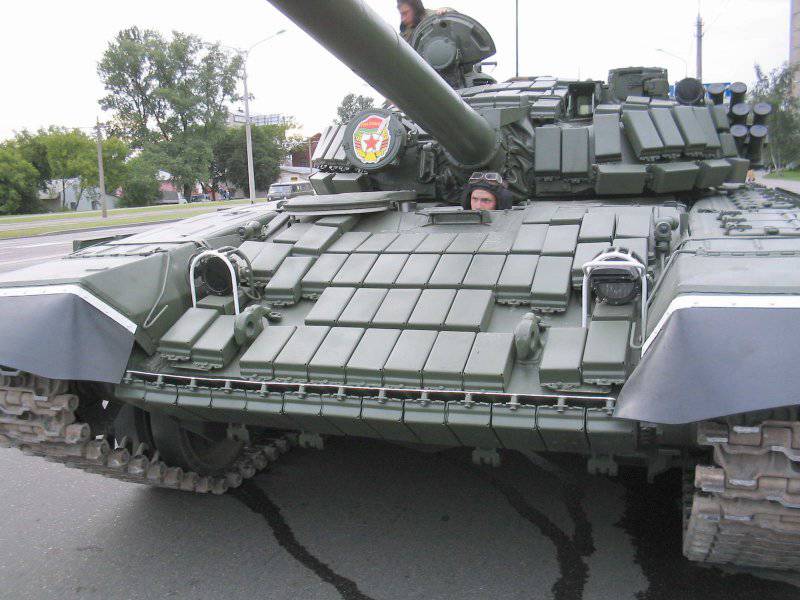
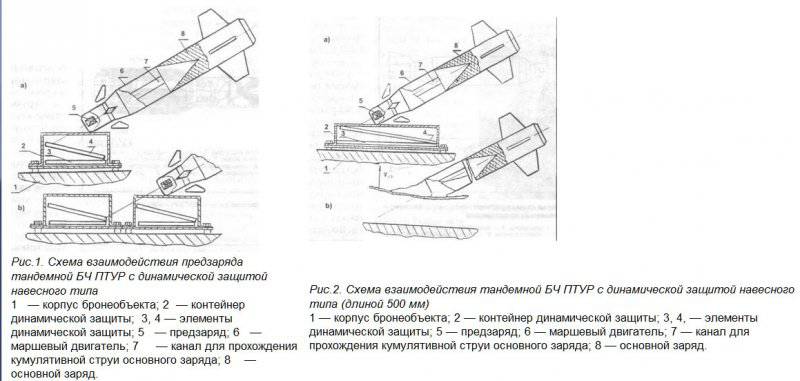
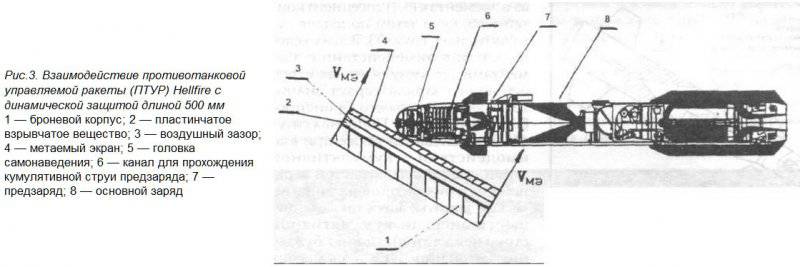
Information